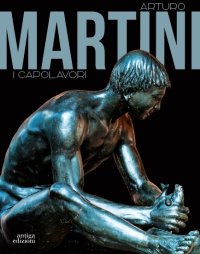Ancient Roman Topography and Architecture I. Campbell
English Text.
London, 2004; 3 vols., clothbound, pp. 1065, 684 b/w ill., cm 22x28,5.
(The Paper Museum of Cassiano dal Pozzo. Series A. Parte 9).
series: The Paper Museum of Cassiano dal Pozzo. Series A: Antiquities and Architecture
ISBN: 1-872501-12-5
- EAN13: 9781872501123
Subject: Graphic Arts (Prints, Drawings, Engravings, Miniatures),Painting
Period: 1400-1800 (XV-XVIII) Renaissance
Places: No Place
Languages: 
Weight: 0.01 kg
This three-volume catalogue is the first of two Parts of the Catalogue Raisonné to cover the large corpus of architectural and topographical drawings from the Paper Museum. With a second Part dedicated to drawings of Renaissance and later architecture (A.X, forthcoming), the present title covers the drawings documenting the remains of antique buildings. These architectural remains were to be found for the most part in Rome and the surrounding countryside, stretching south east to the Alban Hills and east to Palestrina and Tivoli. Commissioned and collected by Cassiano dal Pozzo and his younger brother Carlo Antonio, the drawings formed a fundamental part of their ambitious enterprise to record all surviving traces of Roman civilization in the Museo Cartaceo. The drawings included in this catalogue are divided between the Royal Library at Windsor Castle, the Department of Greek and Roman Antiquities of the British Museum and the Sir John Soane's Museum, with an additional group from the Stirling-Maxwell albums now dispersed among other institutions and private collections. The material ranges from fragments depicting a single architectural detail to folios with views of whole towns and fortification schemes. The number of older drawings acquired by the dal Pozzo brothers in the present group far exceeds those that were newly commissioned by them, and includes groups of drawings connected with architectural treatises by Antonio Labacco (for his Libro appartenente all'architettura, 1552) and by Giovanni Antonio Dosio (for his Trattato) as well as by Pirro Ligorio for his encyclopaedic collection. One of the earliest sheets bears drawings of the Arch of Trajan in Benevento, newly attributed to Francesco di Giorgio Martini (1439--1501). Among the commissioned works by Cassiano are copies after earlier architectural drawings by, for example, Giuliano da Sangallo from his famous sketchbook in the Vatican, the Barberini Codex. The arrangement of the drawings in volumes 1 and 2 of the catalogue is chronological by artist. Volume 3 consists of individual drawings and smaller groups arranged by location (starting with Rome and moving through Albano and its vicinity, the Campagna and the rest of Italy) and then by subject (capricci, columns, entablatures, cornices, friezes, architraves and other architectural fragments). Comparative photographs of the extant buildings and other sources for the drawings are included. Introductory essays introduce the different categories and groups of drawings, discuss the ways in which the dal Pozzo brothers ordered the architectural drawings within their Paper Museum and place the material in the context of previous and contemporary collections of architectural drawings.












